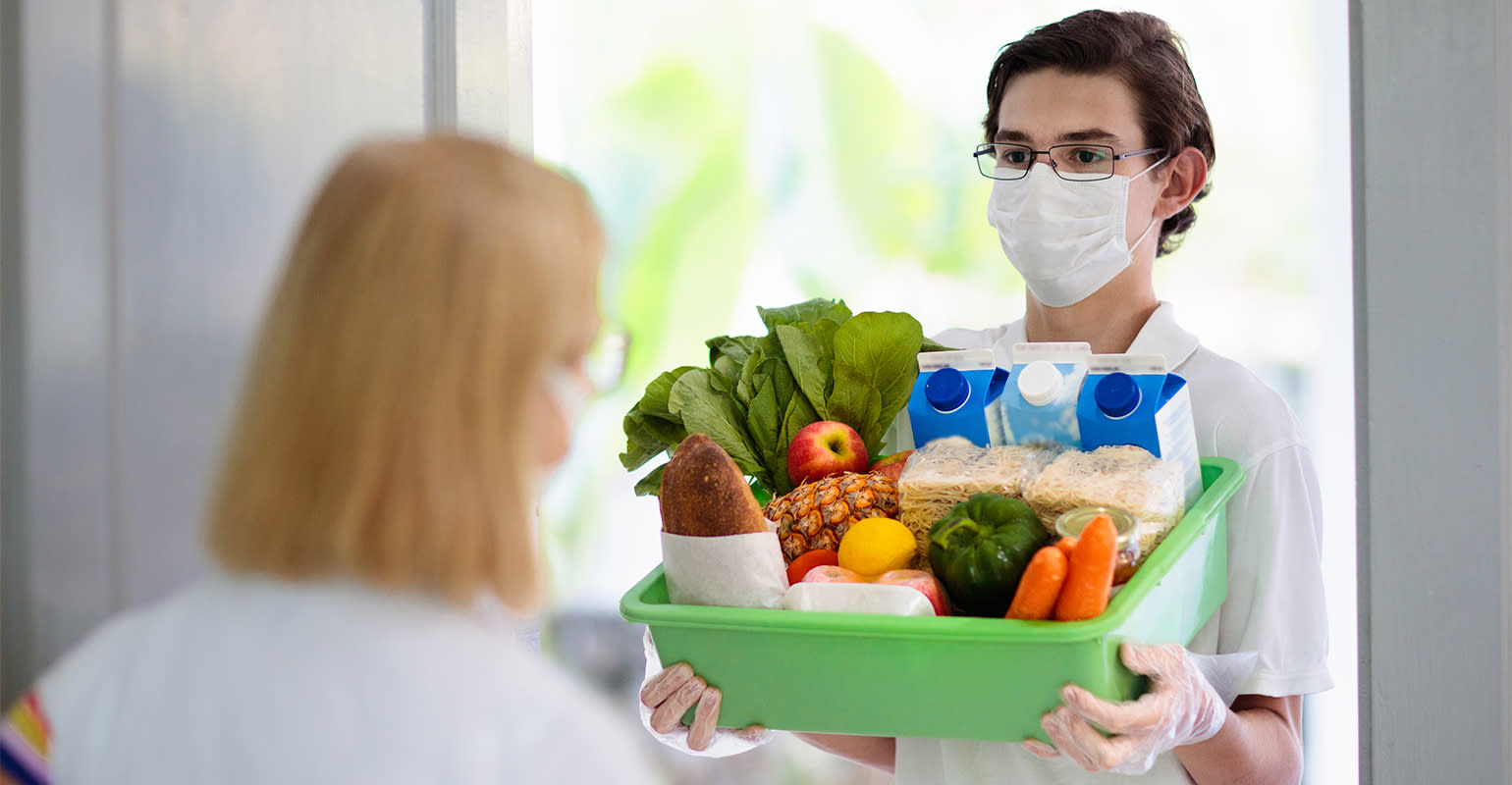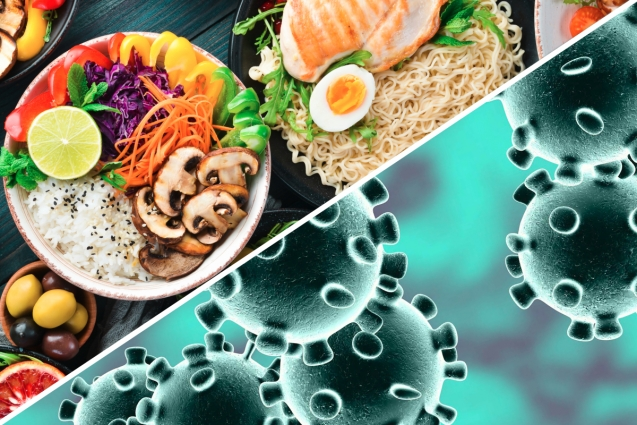Opinion: How To Address The Impact of COVID-19 on Global Food System

Opinion: How To Address The Impact of COVID-19 on Global Food System
According to the Brookings Institution, COVID-19 could result in a global loss of $2.4 trillion to over $9 trillion in gross domestic product this year alone. And according to the World Bank, agriculture accounted for one-third of global gross domestic product as of 2014, while the Food and Agriculture Organization has estimated that 60% of the world’s people depend on agriculture for their livelihoods.
COVID-19 — a timeline of the coronavirus outbreak
Follow the latest developments on the new coronavirus that causes COVID-19. Though the global scope of COVID-19 presents a unique set of challenges, we can learn important lessons from previous outbreaks — Ebola virus disease, Middle East respiratory syndrome, and severe acute respiratory syndrome — and their impacts on agriculture and food systems.

Ebola and associated control measures caused widespread disruption to agriculture and markets in areas affected by the disease, as well as elsewhere. In fact, Ebola resulted in approximately $2.2 billion in lost GDP in Guinea, Liberia, and Sierra Leone in 2015. In Liberia, area cultivated decreased along with rural incomes. Aggregators were unable to purchase at the farm gate, markets were closed, and supply chains were restricted due to quarantines, sick truck drivers, border closures, and trade restrictions. Additionally, reduced incomes limited farmers’ ability to hire farm labor, which was highly restricted because collective work was banned in fields.
This had significant food security implications. In Liberia, rice prices increased by more than 30%, while cassava prices rose 150%. In the wake of COVID-19, food prices in China have increased by 20%, trade restrictions have been imposed by countries that include major exporters of wheat and rice — Kazakhstan and Vietnam — and agricultural labor migrations have been disrupted. Trade restrictions can impact world food prices, disproportionately affecting poor consumers, while shortages of labor can reduce overall production and food viability.
Governments and the international development community must quickly mobilize efforts to mitigate the impacts of COVID-19 on food and agriculture and, most importantly, to protect the food security of vulnerable people. The International Food Policy Research Institute’s early projections indicate that even under an effective COVID-19 containment scenario, 14 million to 22 million people could slip into extreme poverty and low- and middle-income countries could see a 25% decline in agri-food exports. While it will take time to fully understand the scope of COVID-19’s impact on food and agricultural systems, here are a number of actions that the development community can start to take now:
1. Increase assessments of the impacts of COVID-19 on agriculture and food systems
Just as increased testing for COVID-19 is critical for public health, so too is measuring its impact on agriculture and food systems. The World Food Programme and others are ramping up monitoring of food prices globally, and the Famine Early Warning Systems Network is integrating COVID-19 impacts into food security early warning.
The use of cutting-edge remote-sensing tools, combined with machine learning, offers a promising approach to map disruptions in crop production. Data collection using cellphones and social media can be deployed at scale to monitor the global impacts of COVID-19 on farmers and consumers.
Although the focus needs to be on understanding the immediate impacts of COVID-19 on food and agriculture, the long-term impacts require careful consideration. The impact of the HIV/AIDS epidemic on labor productivity, intergenerational knowledge transfer, and dependency ratios remain challenges in many countries today. COVID-19’s impact will no doubt be different, but starting to consider these longer-term effects now will enable us to better address them.
2. Support farmers to continue producing and marketing food
Finding ways of supporting farmers to keep producing food and to remain connected to markets is essential. For example, we can help farms institute safe labor practices, increase access to personal protective equipment — such as masks and gloves that are in high demand due to needs in the health care system — and reduce contact with packaging and produce. Taking measures such as these can reduce the spread of COVID-19 and promote continued production of food.
Helping farmers adopt labor-saving practices that compensate for reduced labor availability — caused by sick family members, limitations on collective labor, and restrictions on the movement of people to producers’ fields — is also important.
3. Accelerate the deployment of relevant agricultural technologies and digital agriculture solutions
Agricultural technologies, especially digital agriculture solutions, offer a range of important opportunities to address the impacts of COVID-19 on agricultural production, labor availability, input supply, and logistics. Agricultural drone sales have skyrocketed in China to address labor constraints and to reduce human contact amid COVID-19. Drones and other digital extension tools can help farmers adopt labor- and input-saving practices, while digital agriculture solutions that link farmers to buyers and logistics services could help reduce the impacts of control measures related to COVID-19 on aggregators and supply chains.
4. Support small, medium, and large agribusinesses
Small and medium enterprises are the bedrock of the world’s economy, representing an estimated 95% of private sector companies. In sub-Saharan Africa, micro and small enterprises employ almost 80% of the workforce. Agriculture SMEs are extremely vulnerable to shocks, as they have limited cash reserves and little access to risk-finance tools. One study found that only 7.3% of 301 surveyed SMEs in Kenya and Senegal had insurance, and 16.9% had access to loan finance for recovery from climate disasters. It’s safe to say that few, if any, private sector actors in LMICs or high-income countries have pandemic insurance.
Recovery lending, credit lines, grants, and other tools could all help SMEs weather the impacts of COVID-19 and be in a stronger position to support broader economic recovery. Development actors are especially well positioned to work with their private sector partners to support business continuity planning, develop digital marketing platforms, and enact other measures that help SMEs keep afloat and become more resilient.
5. Innovate in supply chains and markets
Disruptions to supply chains and markets have widespread impacts on the food system. Innovative efforts, such as China’s “green channel” initiative, are needed to help get inputs to farmers and produce to market. Digital logistics, both in rural and urban areas, can reduce the impacts of control measures related to COVID-19 on transport, aggregation, and retail systems.
6. Support regional policy dialogues to help countries address food shortages
Governments need to innovate and collaborate around food security and agriculture policy. This will allow countries to better manage their agri-food imports and export, reduce the risks of food trade bans, and ultimately ensure their populations have access to food. Investments in sanitary and phytosanitary controls and good practices in transport and food safety can build confidence in regional and global trade systems and help improve the flow of food to where it needs to go.
7. Assess the impact of COVID-19 on agriculture-based livelihoods and food security using a gender lens
Approaches to address COVID-19 that carefully consider the gender dimensions of food security, labor, health, and vulnerability are essential. Women play a central role in the market as traders, producers, and health care workers, and they often assume the role of caretakers in the community. These roles may increase exposure to illness and impact income earning.
Access to food, income, resources and assets, information, and social support can be greatly shaped by cultural norms, beliefs, and expectations. Accordingly, divisions of labor and interpersonal and social dynamics within the household and community may influence access to information, financial support, and health services. The development of gender-sensitive solutions to address COVID-19 will facilitate the engagement of men, women, and youths, while addressing the inherent vulnerabilities of each group as the public health response evolves.
Action to address the impacts of COVID-19 on our food and agriculture system needs to be accelerated and informed by ideas and practices from around the world. The ideas above are only a start. By collaborating to bring ideas and partnerships together, the global community has a much stronger chance of mitigating the impacts of COVID-19 on the global food system and protecting the food security of the most vulnerable people around the world. To catalyze the discussion, we ask other agriculture and food security practitioners from the international development community, private sector, and elsewhere to share their ideas in the comments below.
